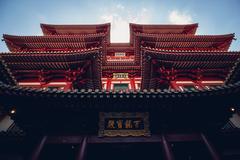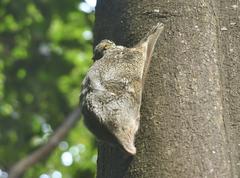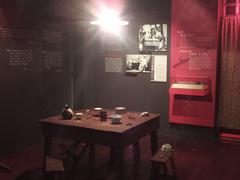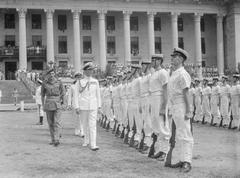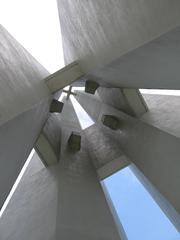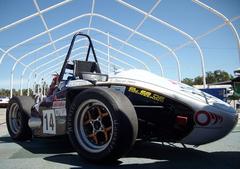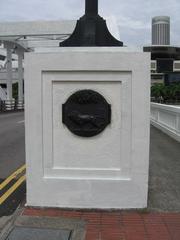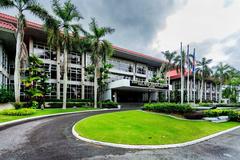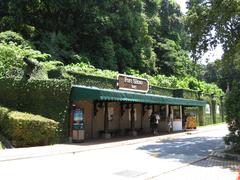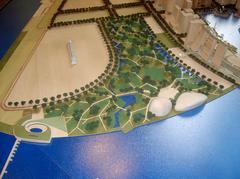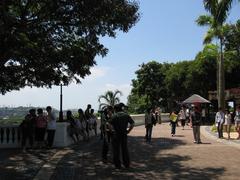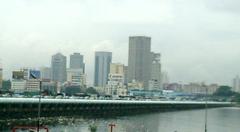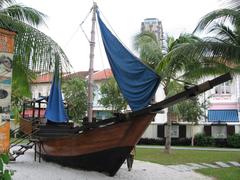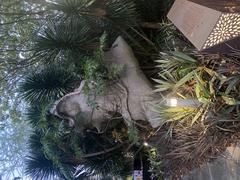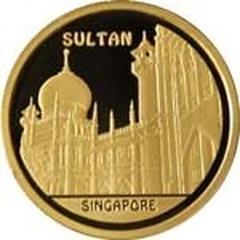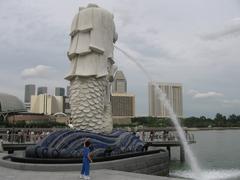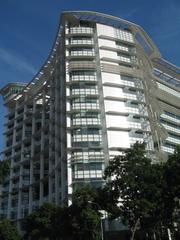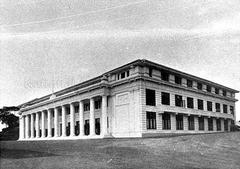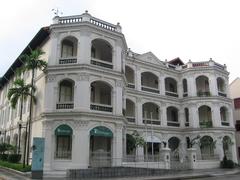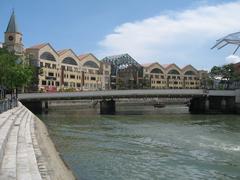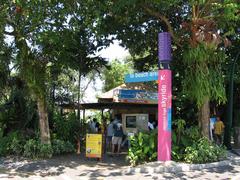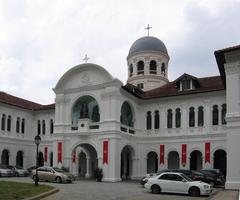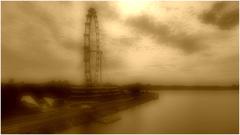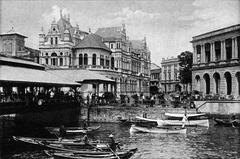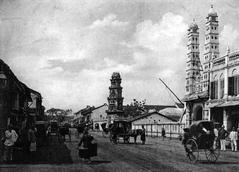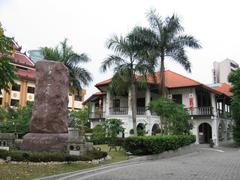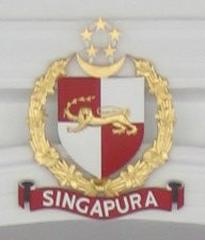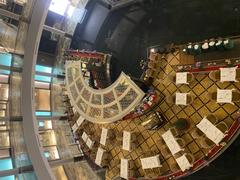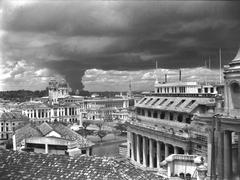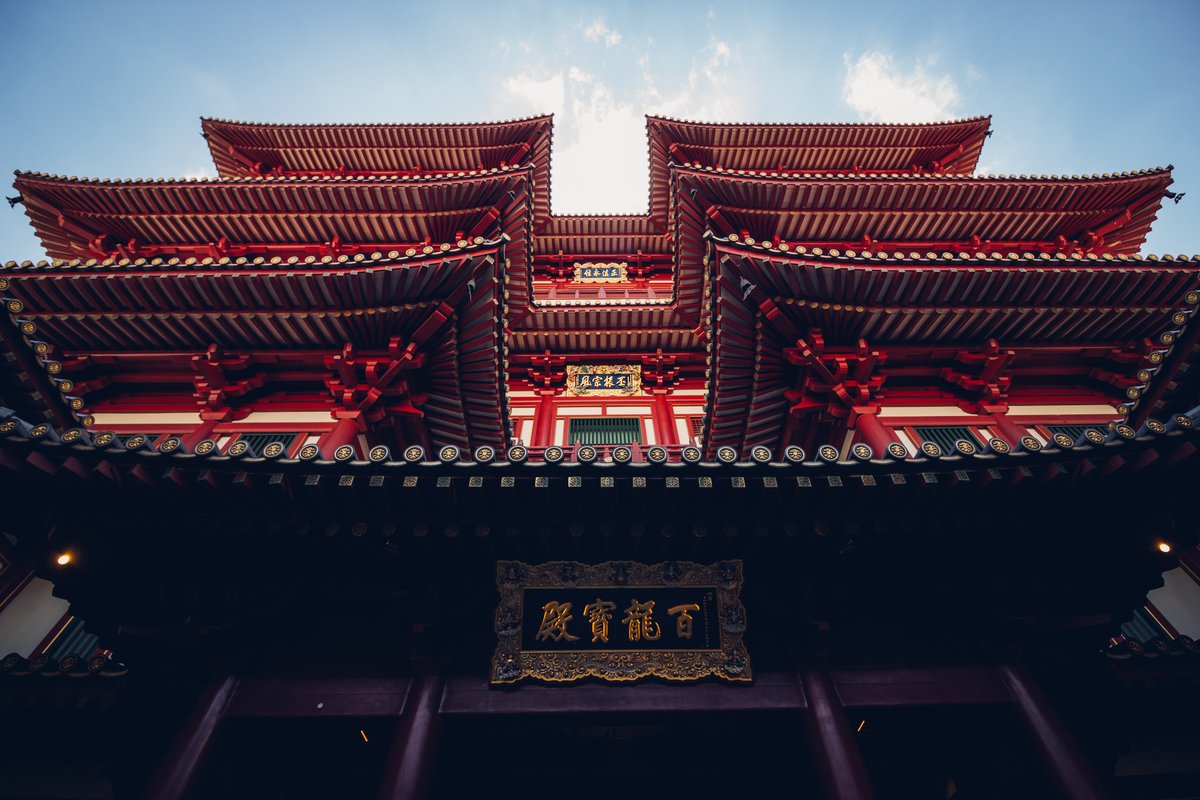
Buddha Tooth Relic Temple and Museum Singapore Visiting Hours Tickets and Attractions
Date: 15/06/2025
Introduction to the Buddha Tooth Relic Temple and Museum in Singapore
The Buddha Tooth Relic Temple and Museum in Singapore is a remarkable cultural and spiritual landmark nestled in the bustling Chinatown district. Established in 2007, the temple was built to enshrine what is believed to be a sacred relic of the historical Buddha—a tooth discovered in Myanmar and entrusted to Singapore’s Buddhist community. This temple not only serves as a place of veneration but also as a dynamic museum showcasing Buddhist art, scriptures, and cultural artifacts, reflecting Singapore’s rich Buddhist heritage and vibrant multicultural tapestry (NLB Singapore Infopedia; Lion Heartlanders).
Architecturally, the temple is a masterpiece inspired by the Tang Dynasty style, symbolizing the Buddhist universe through its mandala-inspired layout, multi-tiered pagodas, intricate woodwork, and ornamentation steeped in Buddhist symbolism. Visitors are welcomed by the grandeur of the Hundred Dragons Hall and are drawn upward through various floors featuring rich collections of Buddhist relics, statues, manuscripts, and the Sacred Light Hall where the golden stupa enshrining the tooth relic resides (Chinatown.sg; Singapore Travel Hub).
The temple operates daily from 7:00 AM to 7:00 PM, with specific viewing hours for the relic chamber, and offers free admission, making it accessible to all visitors. It also provides guided tours, cultural events, and educational programs that deepen appreciation for Buddhist traditions and Singapore’s historical sites (Tripoto; Veena World).
Beyond its religious and cultural significance, the temple stands as a vibrant hub fostering community engagement and spiritual reflection, attracting millions of visitors annually who come to admire its architectural splendor, participate in rituals, and explore nearby attractions such as the Chinatown Heritage Centre, Sri Mariamman Temple, and Maxwell Food Centre (Once in a Lifetime Journey; Condé Nast Traveler).
This comprehensive guide will provide you with detailed insights into the Buddha Tooth Relic Temple’s history, architecture, visitor information including visiting hours and ticketing, dress code and etiquette, special events, and tips on how to maximize your visit to this iconic Singapore historical site.
Table of Contents
- Origins of the Buddha Tooth Relic
- Founding Vision and Construction
- Architectural and Artistic Significance
- Religious Significance and Ritual Practice
- Controversy and Perspectives on Authenticity
- Visiting the Buddha Tooth Relic Temple: Hours, Tickets, and Practical Information
- Visitor Experience and Practical Information
- Frequently Asked Questions (FAQ)
- Visual Highlights and Media
- Explore More: Related Attractions and Articles
- Plan Your Visit Today!
Origins of the Buddha Tooth Relic
The Buddha Tooth Relic Temple and Museum (BTRTM) in Singapore is named after what is believed to be a sacred relic: a tooth attributed to Siddhartha Gautama, the historical Buddha. According to the temple’s records, the relic was discovered in 1980 by Venerable Cakkapala, abbot of the Bandula Monastery in Mrauk U, Myanmar. During restoration works on a collapsed stupa and Buddha statue, the tooth was reportedly found within a solid gold stupa on Bagan Hill (NLB Singapore Infopedia). The relic remained enshrined at Bandula Monastery for over two decades, largely unknown to the wider Buddhist world.
In 2001, Bandula Monastery sought financial assistance for its upkeep and reached out to Venerable Shi Fazhao of Singapore’s Golden Pagoda Temple. This connection led to a pivotal visit by Ven. Shi to Myanmar, where he formed a close relationship with Ven. Cakkapala. In 2002, Ven. Cakkapala traveled to Singapore, bringing the tooth relic for a major exhibition at the Golden Pagoda Temple. The event, which marked the temple’s 10th anniversary, drew over 300,000 visitors and heightened public interest in the relic (NLB Singapore Infopedia). On August 4, 2002, Ven. Cakkapala formally entrusted the relic to Ven. Shi, expressing the wish that a monastery be built in Singapore to house it and welcome Buddhist pilgrims. Ven. Cakkapala passed away later that year, cementing the responsibility for the relic’s care with Ven. Shi and the Singaporean Buddhist community.
Founding Vision and Construction
Following the transfer of the relic, Ven. Shi Fazhao undertook a year-long spiritual retreat. Emerging from this period, he was inspired to establish a temple dedicated to the Buddha Tooth Relic. He envisioned a structure that would not only serve as a place of veneration but also promote Buddhist culture, education, and welfare services (NLB Singapore Infopedia). The temple’s design was conceived as a mandala—a symbolic representation of the Buddhist universe—and drew heavily on the architectural motifs of China’s Tang Dynasty, a period renowned for its flourishing Buddhist art and culture.
Chinatown was selected as the temple’s location, with the intention of enhancing the district’s cultural vibrancy and heritage. The Singapore Tourism Board (STB) supported the project, recognizing its potential to attract both devotees and tourists interested in religious and cultural attractions (NLB Singapore Infopedia). In January 2005, the BTRTM secured a 30-year land lease for a 2,700-square-metre site on South Bridge Road, at the heart of Chinatown.
Construction began in March 2005, with the project’s estimated cost reported at S$40 million, though later figures suggest the final cost reached S$75 million (Straits Times). The temple’s funding was bolstered by significant donations, including 83 kilograms of gold and S$10 million in cash from devotees (NLB Singapore Infopedia). The temple officially opened its doors in May 2007 and was consecrated in 2008.
Architectural and Artistic Significance
The BTRTM stands as a striking example of Tang Dynasty-inspired Chinese Buddhist architecture. Its design, based on the Buddhist mandala, symbolizes the universe and reflects the temple’s spiritual aspirations (Chinatown.sg). The building’s richly ornamented interiors and exteriors are adorned with intricate carvings, statuary, and decorative motifs that pay homage to Buddhist art traditions spanning centuries.
The temple’s centrepiece is the Sacred Light Hall on the fourth floor, where the Buddha Tooth Relic is enshrined within a massive stupa. This stupa weighs approximately 3,500 kilograms and incorporates 320 kilograms of gold, of which 234 kilograms were donated by devotees (Chinatown.sg). The stupa’s lavish construction underscores the reverence accorded to the relic and the collective devotion of the Buddhist community.
Other notable features include the Nagapuspa Buddhist Culture Museum, which houses a collection of Buddhist artefacts from across Asia, and the temple’s rooftop garden, home to the Dendrobium Buddha Tooth orchid and a large Buddhist prayer wheel (Chinatown.sg). The temple’s lighting, upgraded in recent years, enhances both its spiritual ambiance and its status as a landmark in Singapore’s Chinatown (arc-magazine.com).
Religious Significance and Ritual Practice
The Buddha Tooth Relic is regarded by many Buddhists as a supremely sacred object, believed to be the left canine tooth of the historical Buddha, recovered from his funeral pyre in Kushinagar, India (visitsingapore.com). The veneration of bodily relics has deep roots in Buddhist tradition, symbolizing the Buddha’s enduring presence and serving as a focal point for faith and devotion.
At the BTRTM, the relic is enshrined in a chamber accessible only to monks, but visitors can view the relic chamber from a public gallery twice daily (NLB Singapore Infopedia). Daily services and rituals are conducted by resident monks, and the temple is a hub for Buddhist festivals, ceremonies, and educational activities. The presence of the relic has made the temple a major pilgrimage site for Buddhists from Singapore and abroad.
The temple also houses other sacred spaces, including halls dedicated to various Buddhas and Bodhisattvas, a Ksitigarbha Hall for ancestral tablets, and spaces for meditation and prayer. The integration of museum galleries within the temple complex reflects a commitment to both religious practice and the preservation and dissemination of Buddhist heritage (Chinatown.sg).
Controversy and Perspectives on Authenticity
The authenticity of the Buddha Tooth Relic has been a subject of public debate, particularly around the time of the temple’s opening in 2007. Media reports questioned whether the relic could be definitively proven to be the Buddha’s actual tooth, with some calling for scientific verification such as DNA testing (NLB Singapore Infopedia). Ven. Shi Fazhao responded by emphasizing the importance of faith and the diversity of perspectives within Buddhism, stating, “Each of us has different views on what is ‘real’, as it depends on each individual’s understanding of Buddhism. While we fully respect the opinions of others, we should stand firm on our own faith towards the sacred relics.”
This stance reflects a broader Buddhist approach, where the value of relics often lies not in empirical proof but in their capacity to inspire devotion, ethical conduct, and spiritual reflection. The temple’s leadership and many devotees maintain that the relic’s significance is rooted in faith and the positive role it plays in the community.
Visiting the Buddha Tooth Relic Temple: Hours, Tickets, and Practical Information
Visiting Hours
The Buddha Tooth Relic Temple is open daily from 7:00 AM to 7:00 PM, making it accessible to both early visitors and those coming in the evening. The relic chamber is viewable from the public gallery twice daily, typically in the morning and early evening; visitors are encouraged to check the temple’s official website or contact the temple for the exact timings.
Admission and Tickets
Entry to the temple and museum is free of charge, welcoming visitors of all backgrounds to explore its rich heritage and spiritual ambiance. Donations are appreciated but not required.
Accessibility
The temple is wheelchair accessible, with lifts and ramps available to assist visitors with mobility needs. Assistance is provided upon request.
Guided Tours and Special Events
Guided tours are occasionally available, offering deeper insights into the temple’s history, architecture, and religious practices. The temple also hosts special events during major Buddhist festivals such as Vesak Day and the Lantern Festival. Visitors can check the temple’s schedule online or inquire at the visitor information center.
How to Get There
Located at 288 South Bridge Road in Chinatown, the temple is easily accessible via public transport. The nearest MRT stations are Chinatown and Outram Park. Several bus routes also serve the area. For visitors driving, nearby parking options are available but limited.
Nearby Attractions
Visitors can explore other Singapore historical sites nearby, including Chinatown Heritage Centre, Sri Mariamman Temple, and Maxwell Food Centre. The temple’s location in Chinatown allows for rich cultural experiences within walking distance.
Visual Highlights and Media
The temple’s elaborate Tang Dynasty architecture and golden stupa are visually stunning and popular photography subjects (note: photography is allowed in most areas but prohibited inside the relic chamber). High-quality images of the temple’s exterior, interior halls, the Sacred Light Hall, and rooftop garden can be found on the official website and tourism portals. Interactive 360-degree virtual tours are also available online, providing an immersive experience for those unable to visit in person.
Frequently Asked Questions (FAQ)
Q: What are the visiting hours of the Buddha Tooth Relic Temple? A: The temple is open daily from 7:00 AM to 7:00 PM.
Q: Is there an entrance fee or ticket required? A: Admission is free to all visitors.
Q: Are guided tours available? A: Yes, guided tours are occasionally offered; check the temple’s official website for schedules.
Q: How do I get to the Buddha Tooth Relic Temple? A: The temple is located at 288 South Bridge Road in Chinatown, accessible via Chinatown and Outram Park MRT stations or multiple bus routes.
Q: Is photography allowed inside the temple? A: Photography is allowed in most areas, except inside the relic chamber.
Q: Is the temple wheelchair accessible? A: Yes, the temple provides wheelchair access and assistance.
Explore More: Related Attractions and Articles
For visitors interested in Singapore historical sites and Buddhist culture, check out related articles on:
Plan Your Visit Today!
Experience the rich history, stunning architecture, and spiritual atmosphere of the Buddha Tooth Relic Temple and Museum. For the latest updates on visiting hours, events, and guided tours, follow the temple’s official social media channels.
Download the Audiala app for guided audio tours and to explore more of Singapore’s cultural landmarks with ease. Start your spiritual and cultural journey now!
Introduction
The Buddha Tooth Relic Temple and Museum is a prominent cultural and spiritual landmark located in the heart of Singapore’s Chinatown. Renowned for its stunning Tang Dynasty-inspired architecture and rich collection of Buddhist art and relics, it attracts both devotees and tourists interested in exploring Singapore historical sites. This article provides an in-depth look at the temple’s architectural features and museum collections, along with essential visiting hours, tickets information, travel tips, and answers to frequently asked questions to help you plan a memorable visit.
Architectural Features of the Buddha Tooth Relic Temple and Museum
Tang Dynasty-Inspired Design
The Buddha Tooth Relic Temple and Museum stands as a striking landmark in Singapore’s Chinatown, its architecture meticulously modeled after the Tang Dynasty (618–907 CE) style. This period is renowned for its grandeur and symmetry, and the temple’s design reflects these principles through its imposing multi-tiered pagoda, sweeping eaves, and vibrant red and gold color palette (Lion Heartlanders). The temple’s chief abbot, Venerable Shi Fa Zhao, collaborated with both local and international advisers to ensure authenticity in every detail (Singapore Travel Hub).
The four-storey structure dominates the surrounding streetscape, with its ornate façade featuring intricate woodwork, lattice windows, and decorative motifs that symbolize Buddhist teachings and Chinese cultural heritage. The use of traditional construction techniques and feng shui principles is evident throughout, intended to foster harmony and spiritual well-being (Lion Heartlanders).
Key Architectural Elements
Main Entrance and Grand Hall
Upon entering, visitors are greeted by the Hundred Dragons Hall, the temple’s main prayer hall. This space is adorned with hundreds of golden Buddha statues and dragon motifs, representing protection and spiritual power. The hall’s high ceilings, supported by massive red columns, create a sense of awe and reverence. The intricate ceiling panels and wall carvings depict scenes from the Buddha’s life, while the polished marble floors reflect the hall’s opulence (TravelSetu).
Sacred Light Hall and Stupa
The Sacred Light Hall, located on the fourth floor, is the spiritual heart of the temple. Here, the revered Buddha Tooth Relic is enshrined within a massive stupa weighing approximately 3,500 kg, of which 320 kg is pure gold, donated by devotees (Trail Stained Fingers). The stupa’s design is inspired by ancient Buddhist reliquaries, with intricate gold filigree and precious stones. Access to the inner chamber is restricted to monks, but visitors can view the relic from a public gallery during specific hours (9am–12pm and 3pm–6pm) (Singapore Travel Hub).
Rooftop Garden and Pagoda
A unique feature is the temple’s rooftop garden, a tranquil oasis that houses a giant prayer wheel and a pagoda. The garden is designed for meditation and reflection, with lush greenery, lotus ponds, and stone pathways. The rooftop pagoda, another nod to Tang Dynasty architecture, offers panoramic views of Chinatown and serves as a peaceful retreat from the bustling city below (Lion Heartlanders).
Universal Wisdom Hall and Ancillary Spaces
Other notable spaces include the Universal Wisdom Hall, used for smaller ceremonies and meditation sessions, and the Eminent Sangha Museum, which honors revered Buddhist monks. The temple also features a vegetarian dining hall, gift shop, and various multipurpose rooms for community events and educational programs (TravelSetu).
Feng Shui and Symbolism
The temple’s layout and orientation are guided by feng shui principles, believed to enhance spiritual energy and harmony. The main entrance faces south, a direction associated with prosperity and auspiciousness in Chinese culture. Symbolic motifs—such as lotus flowers, dragons, and Buddhist swastikas—are integrated throughout the architecture, each carrying specific meanings related to purity, protection, and enlightenment (Lion Heartlanders).
Museum Collections
Buddhist Art and Relics
The museum component of the Buddha Tooth Relic Temple spans several floors, offering a comprehensive exploration of Buddhist art, history, and culture. The collection includes rare artifacts, ancient manuscripts, and religious relics from across Asia, providing insight into the evolution of Buddhist traditions (TravelSetu).
The Buddha Tooth Relic
The temple’s most significant artifact is the Buddha Tooth Relic itself, believed to be a left canine tooth of Siddhartha Gautama, the historical Buddha. According to tradition, the relic survived the Buddha’s cremation in the 4th century BCE and was safeguarded by his disciple Khema. It was later enshrined in Sri Lanka before being brought to Singapore in the early 2000s (Lion Heartlanders). The relic is displayed in the Sacred Light Hall, encased within the golden stupa, and is the focal point of daily rituals and annual festivals.
Statues and Iconography
The museum houses an extensive array of Buddhist statues, ranging from small devotional figures to life-sized representations of Buddhas, bodhisattvas, and arhats. These statues are crafted from various materials, including bronze, jade, and sandalwood, and are notable for their exquisite detail and symbolic gestures (mudras). Many pieces date back centuries and originate from China, India, Tibet, and Southeast Asia (TravelSetu).
Manuscripts and Scrolls
A highlight of the museum is its collection of ancient Buddhist manuscripts and illustrated scrolls. These documents, some written on palm leaves or silk, chronicle the teachings of the Buddha, the spread of Buddhism, and the development of various schools of thought. Informative displays provide context and translations, making the collection accessible to international visitors and scholars alike (TravelSetu).
Relics of Eminent Monks
The Eminent Sangha Museum, located on the upper floors, preserves relics associated with revered Buddhist monks. These include bone fragments, personal effects, and ceremonial items, all displayed in glass cabinets that circle the gallery. The museum also features eerily lifelike statues of these monks, honoring their contributions to Buddhist history (Trail Stained Fingers).
Thematic Exhibitions and Cultural Artifacts
The museum regularly hosts thematic exhibitions that explore various aspects of Buddhist art, ritual, and philosophy. Past exhibitions have focused on topics such as Buddhist cosmology, the symbolism of mandalas, and the role of women in Buddhism. The collection also includes ritual implements, thangkas (Tibetan religious paintings), ceremonial robes, and musical instruments used in temple ceremonies (TravelSetu).
Historical Documentation Center
For those interested in research, the Historical Documentation Center offers a trove of resources, including books, photographs, and multimedia presentations on the history of Buddhism and the temple’s development. This center is particularly valuable for students, historians, and anyone seeking a deeper understanding of Buddhist philosophy and its impact on Asian culture (TravelSetu).
Visitor Information
Buddha Tooth Relic Temple Visiting Hours
The temple and museum are open daily from 7:00 AM to 7:00 PM. The Sacred Light Hall, where the Buddha Tooth Relic is displayed, is accessible to visitors during specific hours: 9:00 AM to 12:00 PM and 3:00 PM to 6:00 PM. It is advisable to visit during these hours to witness the relic and participate in rituals.
Buddha Tooth Relic Temple Tickets
Admission to the Buddha Tooth Relic Temple and Museum is free of charge. Donations are encouraged and appreciated to help with temple maintenance and support charitable activities.
Getting There and Nearby Attractions
The temple is conveniently located in Chinatown, Singapore, accessible via the Chinatown MRT station (Exit A or B). Numerous bus routes also serve the area. Nearby attractions include the Chinatown Heritage Centre, Sri Mariamman Temple, and Maxwell Food Centre, making it easy to explore multiple Singapore historical sites in one trip.
Accessibility
The temple is wheelchair accessible, with ramps and elevators available for visitors with mobility challenges. Facilities such as accessible restrooms are also provided to ensure a comfortable visit for all.
Best Times to Visit
To avoid crowds, early mornings or late afternoons on weekdays are recommended. The temple hosts special ceremonies and festivals during Buddhist holidays, providing a unique cultural experience.
Photography and Conduct
Photography without flash and mobile phone photos are strictly prohibited inside the temple and museum to preserve the sanctity of the space (Singapore Travel Hub). Visitors are encouraged to respect the religious nature of the temple by dressing modestly and maintaining quiet reverence.
Guided Tours
Guided tours are available and provide valuable insights into the temple’s architecture, history, and museum collections. While some tours are offered on-site, booking in advance is recommended, especially for larger groups (TravelSetu).
Frequently Asked Questions (FAQ)
Q: What are the temple’s opening hours?
A: The Buddha Tooth Relic Temple and Museum is open daily from 7:00 AM to 7:00 PM. The Sacred Light Hall viewing hours are 9:00 AM–12:00 PM and 3:00 PM–6:00 PM.
Q: Is photography allowed inside the temple?
A: Flash photography and mobile phone photos are not allowed inside the temple and museum to maintain the sanctity of the space.
Q: Are guided tours available and do they require booking?
A: Guided tours are available and are highly recommended for a comprehensive experience. Booking in advance is advised.
Q: How do I reach the Buddha Tooth Relic Temple via public transport?
A: The temple is best accessed via Chinatown MRT station (Exit A or B). Several bus routes also stop nearby.
Q: Is there an admission fee?
A: Entry is free, though donations are appreciated.
Q: Is the temple wheelchair accessible?
A: Yes, ramps and elevators ensure accessibility for visitors with mobility needs.
Conclusion
The Buddha Tooth Relic Temple and Museum is a must-visit destination for those interested in Singapore historical sites, Buddhist art, and spiritual heritage. From its awe-inspiring Tang Dynasty architecture to its extensive museum collections, the temple offers a profound cultural experience. Plan your visit by noting the temple’s visiting hours and ticket information detailed above, and consider joining a guided tour to deepen your understanding. For more travel tips and cultural insights, explore our related articles and follow us on social media to stay updated on upcoming exhibitions and events.
Map and Virtual Tour:
Interactive Map of Buddha Tooth Relic Temple and Museum
Virtual Tour Link (if available)
Buddha Tooth Relic Temple Visiting Hours, Tickets, and Guide to Singapore’s Historical Sites
Introduction
Discover the awe-inspiring Buddha Tooth Relic Temple and Museum, one of Singapore’s most iconic historical sites nestled in the heart of Chinatown. Whether you’re a spiritual seeker, history enthusiast, or cultural explorer, this guide covers everything you need to know about Buddha Tooth Relic Temple visiting hours, Buddha Tooth Relic Temple tickets, and practical tips to make the most of your visit.
Getting There and Entry
Location and Accessibility
The Buddha Tooth Relic Temple and Museum is centrally located at 288 South Bridge Road, in Singapore’s vibrant Chinatown district (Tripoto). It is easily accessible via public transport:
- MRT: Chinatown MRT Station (North-East and Downtown Lines), Exit A (Pagoda Street), about a 5-minute walk to the temple (Travel In Our Eyes).
- Bus: Bus numbers 61, 80, 145, 166, 197, and 961 stop near Sri Mariamman Temple, adjacent to the temple (Tripoto).
- By Car: Approximately 21.3 km from Changi Airport, with limited parking nearby (Tripoto).
Buddha Tooth Relic Temple Visiting Hours and Admission
- Temple Hours: Open daily from 7:00 AM to 7:00 PM, including public holidays (Veena World).
- Relic Viewing: 9:00 AM to 6:00 PM (Once in a Lifetime Journey).
- Museum and Stupa Chambers: 9:00 AM to 6:00 PM (Veena World).
- Admission: Free entry for all visitors. Donations are welcome at reception or online to support temple upkeep (Tripoto).
Dress Code and Visitor Etiquette at Buddha Tooth Relic Temple
Dress Code
As an active place of worship, the temple enforces a respectful dress code (Condé Nast Traveler):
- No sleeveless tops, V-neck shirts, shorts, or short skirts.
- Shoulders and knees must be covered.
- Robes are available at the entrances for loan if needed (Once in a Lifetime Journey).
Etiquette
- Remove shoes before entering the relic chamber on the 4th floor.
- Flash photography is prohibited except inside the relic chamber.
- Maintain silence and respect worshippers.
- Pets and non-vegetarian food are not allowed inside (Once in a Lifetime Journey).
Navigating the Temple: Layout and Highlights
The Buddha Tooth Relic Temple is a four-story complex with a basement, mezzanine, and rooftop garden (Wikipedia):
- First Floor: Main prayer hall with hundreds of golden Buddha statues and Tang Dynasty-inspired décor (Tripoto).
- Second Floor: Aranya Reference Library, BTRTM History Gallery, and Aranya Buddhist Culture Shop (Once in a Lifetime Journey).
- Third Floor: Buddhist Culture Museum with relics, artifacts, and Buddhist art (Veena World).
- Fourth Floor: Sacred Buddha Tooth Relic Chamber housing the gold stupa containing the relic (Veena World).
- Rooftop: Ten Thousand Buddhas Pagoda, Vairocana Buddha Prayer Wheel, and an orchid garden (Condé Nast Traveler).
Must-See Features
- Sacred Buddha Tooth Relic Stupa: Crafted from 420 kg of gold, this stupa is the temple’s spiritual centerpiece (Tripoto).
- Ten Thousand Buddhas Pagoda: Contains 11,111 miniature Buddhas and Bodhisattvas, with a prayer wheel believed to bring wisdom and good karma (Condé Nast Traveler).
- Rooftop Orchid Garden: A tranquil spot with panoramic views of Chinatown (Condé Nast Traveler).
- Basement: Theatre and vegetarian dining hall offering complimentary meals (donations appreciated) (Wikipedia).
Guided Tours and Self-Guided Exploration
- Free Guided Tours: English tours are available every Tuesday and Thursday, lasting about two hours. Advance booking is recommended (Travel In Our Eyes).
- Self-Guided Visits: Informational plaques throughout allow visitors to explore at their own pace. Allocate 1 to 2 hours for a complete experience (Condé Nast Traveler).
Visitor Facilities and Amenities
Accessibility
The temple is wheelchair accessible, equipped with lifts and ramps (Tripoto).
Facilities
- Restrooms: Available on-site.
- Souvenir Shop: Offers religious artifacts, incense, books, and gifts (Tripoto).
- Dining: Complimentary vegetarian meals served in the basement during lunch hours; donations appreciated (Wikipedia).
- Library: Aranya Reference Library on the second floor provides Buddhist cultural resources (Once in a Lifetime Journey).
Best Times to Visit and Special Events at Buddha Tooth Relic Temple
Timing Your Visit
- Early mornings (7:00–9:00 AM) and early evenings (after 5:00 PM) offer peaceful visits with fewer crowds (Veena World).
- Mid-afternoon tends to be busier with tour groups.
Festivals and Ceremonies
- Vesak Day (Buddha Jayanti): The temple is beautifully decorated with lanterns and hosts special ceremonies, making it the liveliest time to visit (Veena World).
- Regular Rituals: Daily chanting, meditation sessions, and cultural events are open to the public (Veena World).
Nearby Attractions and Local Experiences
- Chinatown Heritage Centre: Explore the history of Singapore’s Chinese community (Tripoto).
- Sri Mariamman Temple: Singapore’s oldest Hindu temple located next door.
- Maxwell Food Centre: Renowned for local hawker fare, a short walk away.
- Chinatown Street Market: Great for souvenirs and street snacks (Tripoto).
Practical Tips for Visitors
- Photography: Allowed in most areas except the relic chamber on the 4th floor, where flash photography is prohibited (Once in a Lifetime Journey).
- Shoes: Remove footwear before entering the relic chamber.
- Donations: Support temple upkeep by donating at reception or online (Tripoto).
- Souvenirs: Purchase from the temple shop to support activities.
- Respect: Maintain silence, especially during ceremonies and inside prayer halls.
Visitor Demographics and Experience
- The temple attracts over 3.6 million visitors annually, including spiritual seekers, history buffs, art lovers, and families (Once in a Lifetime Journey).
- The atmosphere balances quiet reverence from worshippers with awe from tourists (Condé Nast Traveler).
- Whether seeking spiritual insight, cultural enrichment, or architectural marvels, visitors enjoy an immersive experience (Veena World).
Frequently Asked Questions (FAQ)
Q1: What are the Buddha Tooth Relic Temple visiting hours? A: The temple is open daily from 7:00 AM to 7:00 PM. The relic chamber and museum are open from 9:00 AM to 6:00 PM.
Q2: Are there any Buddha Tooth Relic Temple tickets or entrance fees? A: Entry to the temple is free. Donations are welcome to support maintenance.
Q3: Is the temple wheelchair accessible? A: Yes, the temple provides lifts and ramps for visitors with mobility needs.
Q4: What is the dress code for visiting the temple? A: Shoulders and knees must be covered. Sleeveless tops, shorts, and short skirts are not allowed. Robes are available at the entrance if needed.
Q5: When is the best time to visit to avoid crowds? A: Early mornings (7:00–9:00 AM) and early evenings (after 5:00 PM) are the most peaceful times.
Q6: Are guided tours available at the temple? A: Yes, free English guided tours are offered every Tuesday and Thursday. Advance booking is recommended.
Visuals and Media
For an enhanced experience, visitors can enjoy virtual tours and detailed maps available on the temple’s official website. High-quality images with descriptive alt text such as “Buddha Tooth Relic Temple visiting hours entrance” and “Sacred Buddha Tooth Relic stupa Singapore” can help plan your visit.
Internal Links
Conclusion
The Buddha Tooth Relic Temple and Museum is a must-visit Singapore historical site offering rich culture, spiritual heritage, and stunning architecture. Plan your visit around the Buddha Tooth Relic Temple visiting hours to enjoy a serene experience. Don’t forget to support the temple through donations and souvenir purchases. For more travel tips and updates, download the Audiala app, explore our related posts, and follow us on social media. Your unforgettable Singapore adventure awaits!
Introduction
Nestled in the heart of Singapore’s vibrant Chinatown, the Buddha Tooth Relic Temple and Museum stands as a captivating blend of religious devotion, rich history, and cultural heritage. Whether you’re a first-time visitor or returning to deepen your experience, this guide covers everything you need to know—from Buddha Tooth Relic Temple visiting hours and dress code to ticket information, cultural significance, special events, and must-see nearby attractions.
About the Buddha Tooth Relic Temple and Museum
Constructed in 2007, the Buddha Tooth Relic Temple and Museum was built to enshrine what is believed to be a sacred relic of the Buddha: a tooth. The temple’s architecture reflects the Tang Dynasty style and symbolizes the spiritual and cultural heritage of Buddhism in Singapore. Beyond being a place of worship, the temple is a museum showcasing Buddhist art, scriptures, and artifacts, making it one of Singapore’s notable historical sites.
Visiting Hours and Tickets
- Visiting Hours: The temple is open daily from 7:00 AM to 7:00 PM, with the Buddhas of the World Museum operating from 9:00 AM to 5:00 PM.
- Tickets: Entry to the temple and museum is free, making it accessible to all visitors. Donations are appreciated but not mandatory.
- Guided Tours: Self-guided audio tours are available through apps such as Clio Muse Tours, starting from Kreta Ayer Square. Occasionally, the temple offers guided tours during special events—check their official website or social media for updates.
Dress Code Guidelines
Modesty and Respect
Visitors to the Buddha Tooth Relic Temple and Museum are expected to dress modestly out of respect for the sacredness of the site and ongoing religious activities. While the general dress code is “casual,” certain attire is discouraged:
- Bare shoulders (no sleeveless tops or tank tops)
- Revealing clothing (e.g., low-cut tops or see-through fabrics)
- Shorts above the knee and miniskirts
Long pants or skirts and tops with sleeves are recommended for both men and women. The temple may provide shawls or wraps at the entrance for those in inappropriate attire, but availability is limited. It’s best to come prepared (Dress Code Finder).
Footwear
Shoes must be removed before entering certain prayer halls and sacred spaces. Look for signage or follow the lead of worshippers. Shoe racks are available near entrances.
Children and Special Considerations
Children are welcome but should be dressed appropriately and behave respectfully.
Visitor Etiquette
General Behavior
The temple is an active place of worship and cultural institution. Visitors should maintain a quiet and respectful demeanor:
- Silence and Reverence: Speak softly, especially near prayer halls and the relic chamber.
- Photography: Allowed in most areas but avoid flash photography near the Buddha Tooth Relic and during ceremonies. Always respect worshippers and avoid interrupting rituals (Connect@Changi).
- No Touching Sacred Objects: Altars, statues, and offerings should not be touched.
- Follow Instructions: Observe posted signs and directions from staff.
Participation in Rituals
Visitors may observe or quietly join rituals such as incense offerings, chanting, or meditation. When in doubt, observe first or ask staff.
Donations and Offerings
Donations are welcome but not required. Use designated donation boxes and avoid placing money or items on altars unless explicitly permitted.
Food and Drink
Eating and drinking are prohibited inside the temple and museum. Water bottles should be kept in bags.
Special Events and Cultural Significance
The temple hosts annual events such as Vesak Day celebrations, cultural performances, and exhibitions highlighting Buddhist traditions. These events provide deeper insight into Singapore’s Buddhist community and attract visitors interested in cultural immersion.
Highlights and Photographic Spots
Key areas for visitors include the grand main hall, the relic chamber, the rooftop garden with panoramic views of Chinatown, and the museum’s art exhibits. Early mornings are ideal for photography due to softer light and fewer crowds.
Nearby Attractions
Located centrally in Chinatown, the temple is a gateway to several cultural and culinary experiences within walking distance:
Chinatown Street Market (Smith Street)
A bustling market offering souvenirs, handicrafts, and local snacks. Especially vibrant during festivals (TravelSetu).
Maxwell Food Centre
Famous hawker centre across the street, ideal for local dishes like Hainanese chicken rice and laksa (Thrillophilia).
Singapore City Gallery
Interactive exhibits and a large cityscape model 0.2 km away, ideal for urban planning enthusiasts.
Chinatown Heritage Centre
Immersive exhibits on early Chinese immigrants’ lives, 0.2 km from the temple.
Sri Mariamman Temple
Singapore’s oldest Hindu temple featuring vibrant Dravidian architecture; similar etiquette applies.
Thian Hock Keng Temple
One of the oldest Hokkien temples dedicated to the sea goddess Ma Zu Po.
Chinatown Point and People’s Park Complex
Shopping malls offering retail outlets and food courts.
Chinatown Food Street
A lively pedestrian street with regional cuisines.
Practical Travel Tips
- Getting There: Located at 288 South Bridge Road, Singapore 058840. Chinatown MRT station is a 5-minute walk. Public buses serve the area, with limited parking available.
- Accessibility: Wheelchair-friendly with ramps and elevators.
- Best Time to Visit: Early mornings for a peaceful experience.
Visual and Media Resources
For an enhanced visit, consider downloading apps offering virtual tours and audio guides. The temple’s official website and social media pages provide photos, videos, and event updates.
Frequently Asked Questions (FAQs)
Q: Are there any entrance fees for the Buddha Tooth Relic Temple and Museum? A: Entry is free, though donations are welcome.
Q: What are the temple’s visiting hours? A: Open daily from 7 AM to 7 PM; the museum from 9 AM to 5 PM.
Q: Is photography allowed inside? A: Yes, without flash near sacred relics and ceremonies.
Q: Are guided tours available? A: Self-guided audio tours are available; guided tours may be offered during special events.
Q: What is the recommended dress code? A: Modest clothing covering shoulders and knees is required.
Conclusion and Call to Action
The Buddha Tooth Relic Temple and Museum offers a unique glimpse into Singapore’s rich Buddhist heritage and vibrant Chinatown culture. By respecting the dress code and etiquette outlined above, visitors can enjoy a meaningful and immersive experience. For more travel tips, ticket updates, and insider guides to Singapore historical sites, follow our blog and download the Audiala app for exclusive audio tours and real-time updates. Plan your visit today and immerse yourself in the spiritual heart of Singapore!
Summary and Final Tips for Visiting the Buddha Tooth Relic Temple and Museum
The Buddha Tooth Relic Temple and Museum stands as a testament to Singapore’s dedication to preserving and celebrating Buddhist heritage within a modern urban context. Its origins rooted in the sacred relic’s storied journey from Myanmar to Singapore, coupled with its grand Tang Dynasty-inspired architecture, create an immersive cultural and spiritual experience for visitors from around the world (NLB Singapore Infopedia; Lion Heartlanders).
Visitors benefit from free admission and generous opening hours, with opportunities to witness daily rituals, explore extensive museum collections, and enjoy guided tours that enrich understanding of Buddhist teachings and art. The temple’s commitment to accessibility and respectful visitor etiquette ensures a welcoming atmosphere for devotees and tourists alike (Tripoto; Veena World).
Furthermore, the temple’s prime location in Chinatown situates it among a vibrant network of cultural and culinary attractions, offering visitors a holistic Singapore experience. Whether you seek spiritual insight, historical knowledge, or architectural marvels, the Buddha Tooth Relic Temple provides a serene sanctuary enriched by faith, artistry, and community engagement (Once in a Lifetime Journey; Condé Nast Traveler).
Plan your visit during quieter morning or evening hours for a more contemplative experience, and consider joining guided tours or attending special festivals such as Vesak Day to deepen your connection to Buddhist culture. Remember to respect the temple’s dress code and customs to honor the sacredness of this remarkable site.
For the latest updates on visiting hours, events, and guided tours, be sure to check the temple’s official website and social media channels. Enhance your journey by downloading the Audiala app for audio tours and explore related Singapore historical sites through our curated articles. Embark on your spiritual and cultural adventure at the Buddha Tooth Relic Temple and Museum—a jewel of Singapore’s Chinatown and a beacon of Buddhist heritage (Chinatown.sg; Singapore Travel Hub).
References and Further Reading
- Buddha Tooth Relic Temple Visiting Hours and Guide to Singapore’s Historic Buddhist Landmark, 2025, National Library Board Singapore https://www.nlb.gov.sg/main/article-detail?cmsuuid=389e7067-97fb-4e1d-b7e9-688efd442319
- Buddha Tooth Relic Temple Singapore: Visiting Hours, Tickets & Historical Insights, 2025, Lion Heartlanders https://www.lionheartlanders.com/post/a-journey-through-the-sacred-buddha-tooth-relic-temple-in-singapore
- Visitor Experience and Practical Information, 2025, Tripoto https://www.tripoto.com/singapore/places-to-visit/buddha-tooth-relic-temple
- Exploring the Buddha Tooth Relic Temple and Museum: Visiting Hours, Dress Code, Etiquette, and Nearby Attractions in Singapore, 2025, Dress Code Finder https://www.dresscodefinder.com/singapore/buddha-tooth-relic-temple-and-museum
- Buddha Tooth Relic Temple and Museum, 2025, Chinatown.sg https://chinatown.sg/visit/buddha-tooth-relic-temple/
- Buddha Tooth Relic Temple and Museum, 2025, Singapore Travel Hub https://www.singaporetravelhub.com/attractions/buddha-tooth-relic-temple-and-museum/
- Buddha Tooth Relic Temple and Museum, 2025, Veena World https://www.veenaworld.com/blog/buddha-tooth-relic-temple-museum
- Buddha Tooth Relic Temple and Museum, 2025, Once in a Lifetime Journey https://www.onceinalifetimejourney.com/lux-singapore/buddha-tooth-relic-temple/
- Buddha Tooth Relic Temple and Museum, 2025, Condé Nast Traveler https://www.cntraveler.com/activities/singapore/buddha-tooth-relic-temple-and-museum
